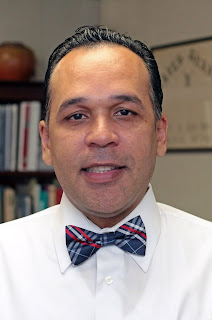Research suggests that when teachers have the benefit of multicultural education preparation, they are less likely to embrace cultural deficit views. Moreover, teachers who have learned culturally responsive pedagogy are more confident and believe they are affective in their instruction of diverse children. Unfortunately, most teacher candidates lack the knowledge, skills, dispositions and experiences needed to teach ethnically and linguistically diverse students.
What is Culturally Responsive Teaching (CRT)?
As the minority population in the United States continues to grow and refugees arrive from many countries, integrating CRT into the curriculum will greatly benefit new teachers and all of their future students.
The term all children did not always mean that all children were included, nor that teachers had high expectations for every student in their classrooms. In today’s educational settings, we still hear that it is about “all children” but, in reality, most teachers are not prepared to teach all children.
CRT can be a resource to truly help future teachers face their prejudices and fears in order to successfully teach students of all cultural backgrounds. CRT goes beyond having a multicultural curriculum in schools; it acknowledges the cultural heritage each individual represents in the classroom. CRT teachers create lesson plans that take into consideration every child’s background and learning style. These teachers can inspire all students to take ownership of their education.
Teachers who use CRT effectively can promote high academic achievement and help all students develop critical thinking skills and become life-long learners. Most important, CRT can promote social justice and have a major impact on closing the achievement gap that exists in the United States among majority and minority students. Teacher education programs need to prepare future teachers who can embrace diversity and promote high academic achievement for all children. Teacher preparation programs in the U.S. should integrate CRT into the curriculum.
— By David Vázquez-González, assistant to the dean
What is Culturally Responsive Teaching (CRT)?
- CRT is respecting the cultures and experiences of various groups and using these as resources for teaching and learning. It appreciates the existing strengths and accomplishments of all students and develops them further in instruction. Examples are race/ethnicity, gender, socio-economic status, religion, sexuality, age and weight.
- CRT acknowledges the legitimacy of the cultural heritage of different groups, both as legacies that affect students’ attitudes and approaches to learning, and as content worthy to be taught in the formal, mandated curriculum.
- CRT builds bridges of relevance between home, community and school experiences, so the learning experiences become seamless.
- CRT uses a range of instructional strategies that are connected to different learning styles, preferences and needs.
- CRT teaches students to know, respect and appreciate their own cultural heritage and the heritage of others; cultural pride is nurtured.
- CRT incorporates multicultural information, materials and resources in all school subjects and activities.
As the minority population in the United States continues to grow and refugees arrive from many countries, integrating CRT into the curriculum will greatly benefit new teachers and all of their future students.
The term all children did not always mean that all children were included, nor that teachers had high expectations for every student in their classrooms. In today’s educational settings, we still hear that it is about “all children” but, in reality, most teachers are not prepared to teach all children.
CRT can be a resource to truly help future teachers face their prejudices and fears in order to successfully teach students of all cultural backgrounds. CRT goes beyond having a multicultural curriculum in schools; it acknowledges the cultural heritage each individual represents in the classroom. CRT teachers create lesson plans that take into consideration every child’s background and learning style. These teachers can inspire all students to take ownership of their education.
Teachers who use CRT effectively can promote high academic achievement and help all students develop critical thinking skills and become life-long learners. Most important, CRT can promote social justice and have a major impact on closing the achievement gap that exists in the United States among majority and minority students. Teacher education programs need to prepare future teachers who can embrace diversity and promote high academic achievement for all children. Teacher preparation programs in the U.S. should integrate CRT into the curriculum.
— By David Vázquez-González, assistant to the dean


According to the write my essay pro research children always receive a trophy - regardless of effort or achievement - we're teaching them that they are a winner and can be rewarded for basically anything. This doesn't just skew their perception of achievement and attainment but it will ultimately result in a downfall of ignorance when they aren't rewarded for their minimal contribution.
ReplyDelete